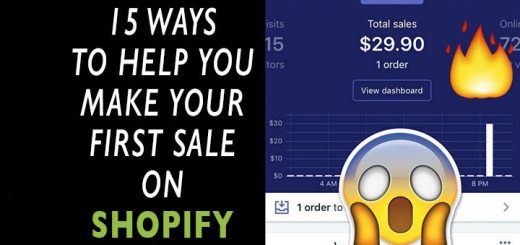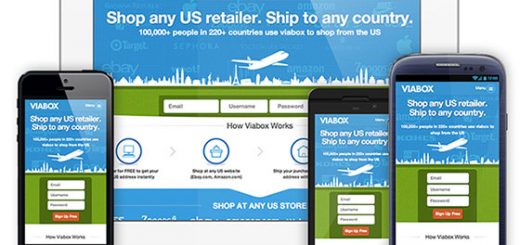How to Boost Your Shopify Store with Google Shopping Insights
eCommerce is growing by more than 10% a year, which is both good news and bad news for online store owners. The good news is that people are buying more online, as in-store retail growth stalls out.
The bad news? Competition for eCommerce customers is fiercer than ever, because there are more stores and because shoppers have higher expectations of online merchants now than ever before.
How can you make your store stand out in search results and impress shoppers when they arrive? One powerful tool you can use is Google Shopping Insights.
What’s Google Shopping Insights?
To understand Shopping Insights and why it’s so useful for online store owners, it helps to know a bit about Google Shopping first. Google’s comparison-shopping engine lets consumers search for what they need, compare prices, and visit retailers’ websites to make their purchases.

You’ll see advertisers’ featured items (called product listing ads) at the top of most search results pages. But the Shopping tab takes you to even more Google Shopping results. You can refine your Google Shopping results by price range, item features, seller and more.

This tool makes it easy for people to comparison shop, bookmark products for later and make purchases fast.

Google Shopping is where the retail industry spends most of its search ad money, and it’s where retailers get most of their search ad clicks.
That means Google gets a lot of continuously updated retailer, product and consumer data to analyze for insights that can help store owners reach more shoppers and earn more sales.
They’ve turned that into a searchable tool: Shopping Insights.
How to Use Shopping Insights to Improve Your Shopify Store
Google’s keyword analysis monitors the pulse of online shoppers’ habits, with daily search data available for the past 12 months. The dataset covers every designated market area in the U.S., 5,000 product categories and more than 45,000 brands. Here’s what you can do with all that information.
1. Adjust your content
Effective keywords come and go, depending on consumer trends, shopping seasons and other variables. To attract the most customers, you want your site to feature keywords they’re searching for now. There are a couple of ways you can use Shopping Insights to do your research.
First, compare the popularity of the items you offer.
For example, if you own a music store, you can see which of the beginner electric guitars you carry is the most popular in searches.

Here’s a year’s worth of search data. It looks like shoppers consistently look for the Fender model more than the other two.
Next, create or update your content to feature the most searched-for products.
To get more traffic from searches, you can feature the Fender Modern Player Telecaster on
- your guitar category landing page.
- any other relevant category pages, like student instruments and great gift ideas.
- how-to content on your site, like a guide to choosing a beginner guitar.
See which products and categories do best during certain shopping seasons.
You can search Shopping Insights by season to see which item or category searches spiked on, say, Cyber Monday. Here’s a good example for our hypothetical music store owner:

Looking at the 2018 winter holiday season, you can see that there were a lot more searches for guitars than for drum kits and bagpipes. You can also see that there were more searches for guitars on Cyber Monday than any other day of that season.
Based on that, you might consider updating your holiday gift guides, blog posts, and Cyber Monday landing page to include more information about guitars vs. pipes and drums.
2. Make your online store work better
We’ve blogged before about the importance of setting up store categories that make sense for your customers. It’s tempting, if you’re a logical person who likes order and patterns, to organize all your category pages and navigation in the same way.
But that may not help your customers find what they want. In fact, it may slow them down and turn them off.
Here’s an example. Let’s say your online music store has navigation tabs for strings, percussion, brass, etc. Logical, but is it helpful? We can enter some of the string instruments into Shopping Insights to find out.

Based on the results – searches for guitars dramatically outperformed cellos, violins and upright basses by a wide margin all year long – your store should have a navigation tab and category specifically for guitars so they’re easy to find.
Just below this graph is more information you can use to make your store easier to navigate.

Based on the popularity of Fender and Gibson in searches for guitars, you might want to create separate categories and navigation tabs for each of those guitar brands.
You can also see what type of device people are using to search for the products you sell.

If you haven’t already optimized your online store for mobile shopping, here’s the evidence you need that it’s time to do so.
3. Improve your product pages
You can use Shopping Insights results to fine-tune individual product pages, too. Here are a few ways to get started:
- Use the full name of popular products in their page metadata and product description copy. Don’t rely on shortened names or images alone.
- Include the most searched-for products in “other products you may like” recommendations on relevant pages. For example, based on the chart we saw earlier, you may want to include the popular Fender Modern Player Telecaster as an “other product” on the pages for your Ibanez and Epiphone beginner guitar pages.
To keep up with keyword trends, you can subscribe to Google’s weekly and monthly Shopping Insights updates for the products, brands and categories in your store.
You can also use Google Merchant Center to upload your current product information for easier integration with Google Shopping Ads and more detailed shopping insights.
Source: Hostgator’s Blog








